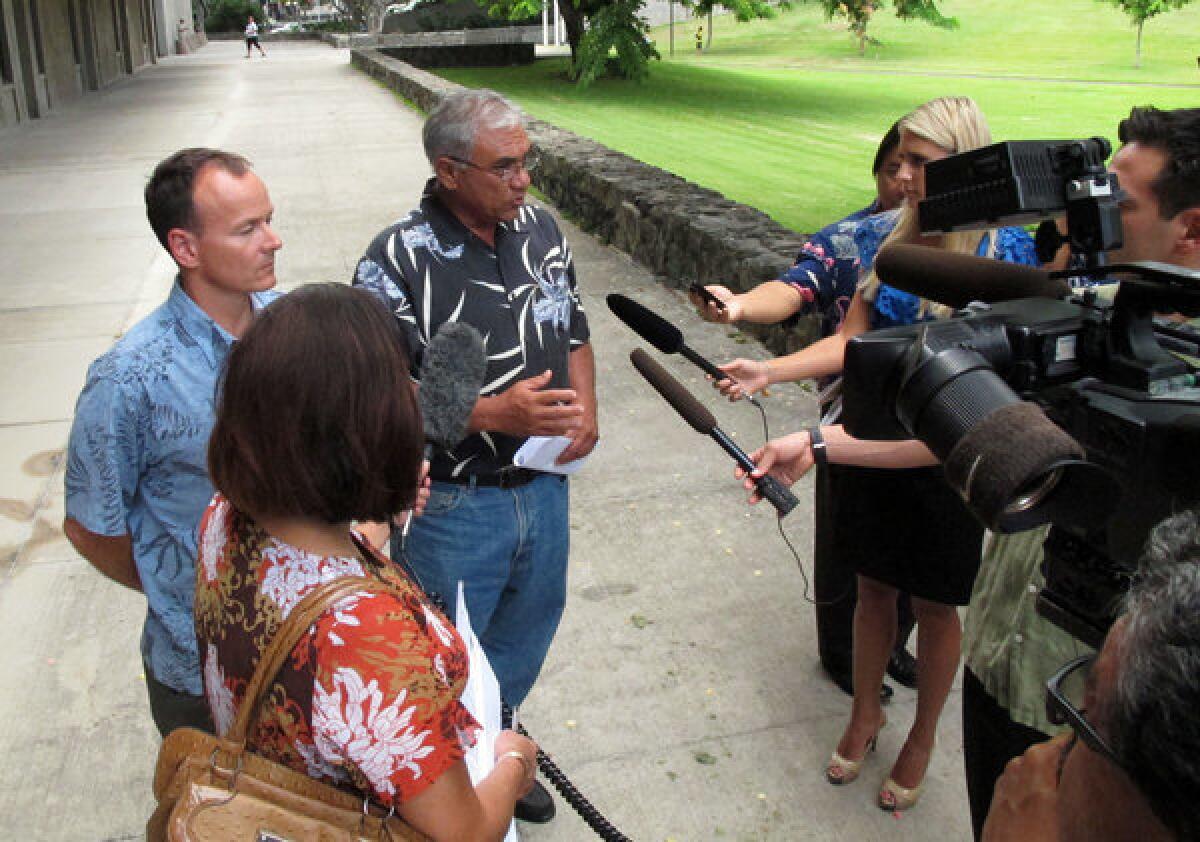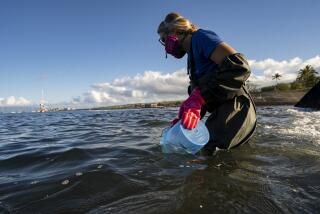Surge in shark attacks worries Hawaii; woman bitten last week dies

Hawaii on Thursday continued to investigate a surge in shark attacks, one day after a German tourist died after losing her right arm to a shark, the first such fatality for the islands in a decade.
Yet, even as public alarm is rising, state officials said they had not been able to identify a pattern.
Jana Lutteropp, 20, died in a Maui hospital after a shark severed her right arm while she was snorkeling last week, officials said. No cause of death has been released. A statement issued by Lutteropp’s family said she had “fought hard to stay alive.”
Seven other beachgoers have been wounded by shark attacks since January, with injuries ranging from bite marks to severe cuts, according to information posted on the state’s shark attack database.
What’s confounding state officials is the lack of a pattern: Incidents have occurred in the morning, at night and in the middle of the day; in opaque, muddy and clear waters; and to surfers, swimmers and snorkelers.
“We have no explanation. These attacks or interactions are all random,” said William J. Aila Jr., chairman of Hawaii’s Department of Land and Natural Resources. “It’s frustrating that we don’t have any answers.”
The latest attack took place on Sunday, when a 16-year-old was bitten in the legs while surfing near Hilo.
On the heels of that incident, Aila announced the launch of a research project focusing on tiger shark movements around Maui, the site of half of this year’s attacks.
Though researchers have studied shark movements around the state for more than two decades, Aila said that there was a gap in data for the county of Maui and that the $186,000 state-funded study would guide policy.
Although the number of shark attacks fluctuates from year to year – the annual average is closer to four – officials say the peak season comes in the last few months of the year, when increasing rainfall sends more fish into the ocean, attracting sharks to the coast.
Of the 10 shark attacks in 2012 -- the highest number of unprovoked incidents in the Hawaiian Islands -- seven took place from September to December, according to the state’s shark attack database.
In earlier eras, officials would respond to a spate of attacks by culling the shark population, but Aila and others said such measures were ineffective because sharks don’t remain in particular territories but instead move regularly across vast distances.
In the face of uncertainty about the shark attacks, officials are urging caution.
If sharks are spotted, lifeguards evacuate the water as a precaution, said Rod Antone, spokesman for the County of Maui, which also includes the islands of Lanai and Molokai.
Immediately after an attack, officials post warning signs on beaches about sharks and restrict access to the water until they can ensure the area is clear of danger, Aila said.
Guidelines posted by the Department of Land and Natural Resources advise those entering the water to avoid shiny clothing or jewelry and to refrain from swimming with open cuts or wounds.
“People need to understand the ocean is a place of wilderness. It’s not a pool,” Aila said, adding that beachgoers should swim in areas monitored by lifeguards and try to limit erratic movement.
“You wouldn’t go into the woods and expect all the bears to treat you civilly.”
ALSO:
Afghan massacre was his own ‘act of cowardice,’ Bales testifies
Bradley Manning plans to serve WikiLeaks sentence as a woman
Hero tells Georgia school gunman: ‘I just want you to know I love you’
Follow L.A. Times National on Twitter
Twitter: @MattHjournomatt.hamilton@latimes.com
More to Read
Start your day right
Sign up for Essential California for news, features and recommendations from the L.A. Times and beyond in your inbox six days a week.
You may occasionally receive promotional content from the Los Angeles Times.







